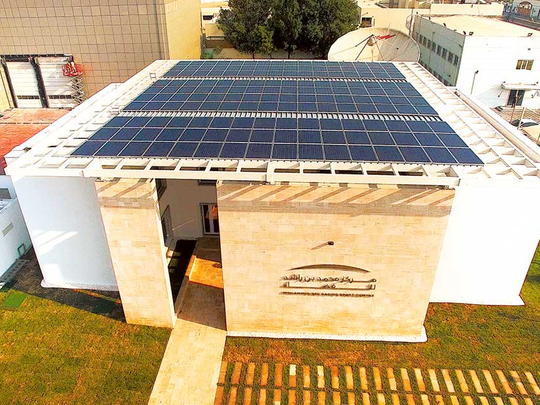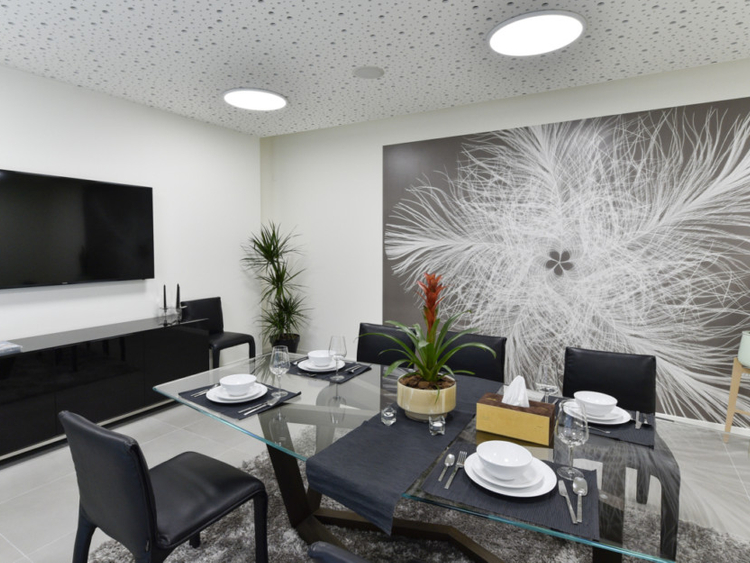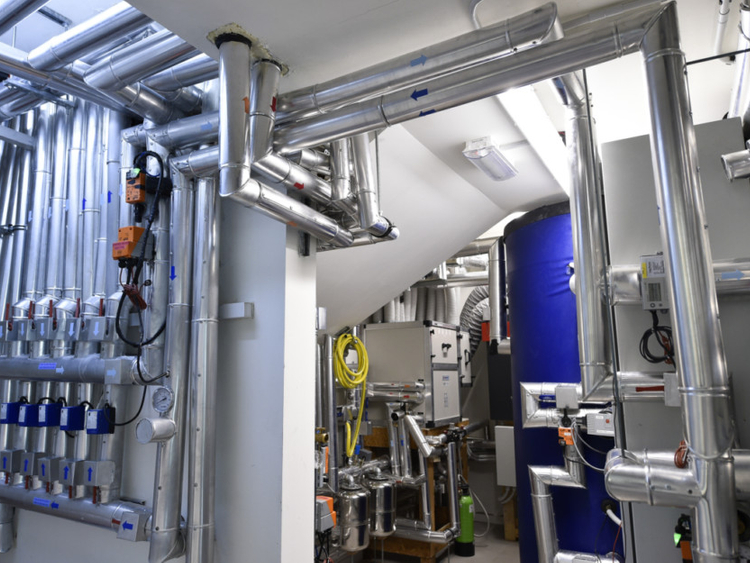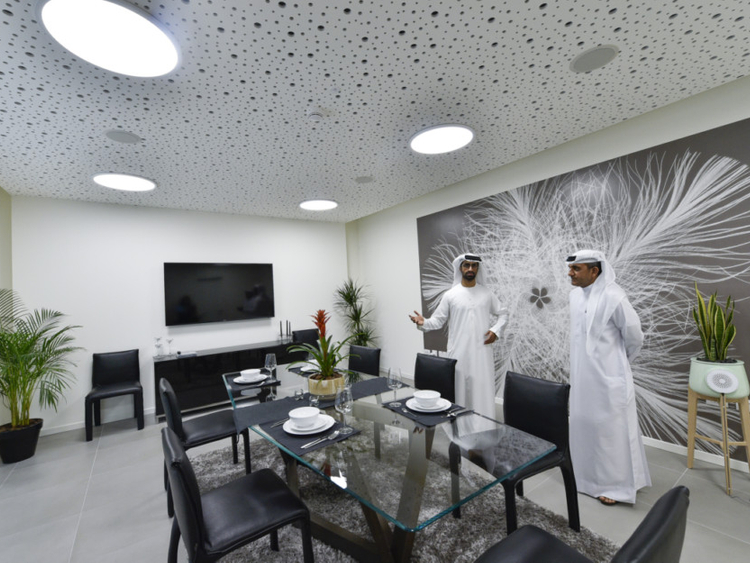
Dubai: A full-sized home that cools itself in the UAE’s scorching summer heat was unveiled in Dubai on Friday.
At first, the two-storey, four-bedroom house, which stands in the headquarters of the Mohammad Bin Rashed Space Centre, seems like a fairly normal family home.
But a closer look reveals the 6,000-square-foot concept’s green credentials, which space centre officials claim make it the region’s first sustainable home.
The house’s outside walls are 61cm thick, and insulated with a combination of polystyrene, gypsum and fibreglass mesh.
The house’s in-built software system regulates lighting, power, temperature and humidity. All the lights are motion-activated LEDs, while blinds covering the home’s triple-glazed windows open and close automatically.
The home was built with help from the Passive House Institute in Germany. The Darmstadt-based institute aims to develop the ‘holy grail’ of building science — structures that use very little energy for heating and cooling.
While the institute claims to have first built Europe’s first ultra-low energy house as far back as 1990, the Middle East’s red-hot, humid climates create a far different challenge.
From the house’s decorative false ceilings, a faint hum reveals the home’s ventilation system. Instead of power-hungry air conditioning, the house uses a mechanical system that filters out dust and particles and cools through refrigerated water pipes.
“Our main goal and objective when we decided to embark on this project was to create a building that is totally independent of the electricity grid,” said Ali Shaheen, the centre’s sustainable energy programme director. “Now we have a building with zero carbon emissions.”
On the roof, 160 solar panels cover 350 square metres of space — and officials claim there’s plenty of room to add more. During the sunny morning on the day of the house’s launch, the solar panels had generated 21 kilowatts.
Thirst for power
The centre is currently working with Dubai’s electricity and water authority (Dewa) to pump the home’s extra power back into the emirate’s electricity grid.
The indoor temperature hovered at around 22.9 degrees Celsius, according to a digital display, around 11 degrees lower than outside. The mechanical cooling system can also extract around 200 litres of water from the air every day — but the water is not drinkable.
“It’s not fully sustainable from the water point of view, but that was not our objective to achieve with this building. The objective was to be sustainable from an electricity point of view,” said Shaheen.
Officials at the centre hope that the eco-home will help inspire property developers to build green. Yet challenges remain.
The average UAE resident uses 550 litres of water per day — the highest per-person consumption in the world. Electricity use is at similar sky-high levels.
However, Shaheen, the programme’s director, is hopeful that similar homes will be seen popping up around Dubai within five years.
“When there is a will, there’s a way,” he said.
Details
The region’s first sustainable home, in numbers:
Four – the number of bedrooms
6,000 – the home’s size, in square feet
75 per cent – energy savings of this house compared to a home of a similar size
160 – The number of solar panels on the home’s roof
61cm – The thickness of the home’s walls, build to keep the heat out
100 - The time taken to build the home, in days. Research and planning took another year















